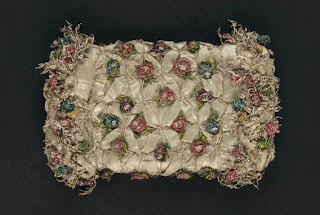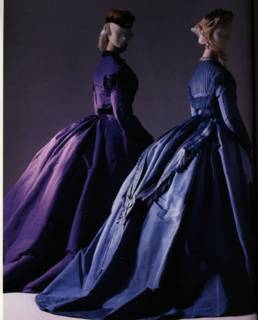
I was thrilled to make it to the Wig Maker during my latest trip to Williamsburg. Check out their new Facebook page. They're not always open on the weekend when I tend to visit, so it was a treat. The wig maker was restyling the governor's wife's wig. It still blows my mind to think that ladies would shave their heads if they wanted to wear a wig. I wonder how common ladies wigs were vs. getting your own hair styled. Does anyone know?
There were all sorts of new wigs on display. In the past, it seems like the store generally had men's wigs on display, but this time there were tons of ladies' wigs. This one is actually a man's wig (can you imagine what a dandy a guy would have to be to wear one of these?). It makes me think of the hairstylist Leonard in Sophia Coppola's "Marie Antoinette."
I LOVE this wig, because it's my hair color and has peacock feathers. I have no idea what's up with the scissors. I think maybe they were on the shelf in the background (not IN the wig), but I didn't notice it when I took the photo.
I love the one on the left. The pretty pin curls toward the top are my favorite.
And here's my favorite. What's not to love? It's the powdery ideal of the 1770's and doesn't look anything like the horrid white wigs costume shops sell (I do realize comparing the quality between costume wigs and the Williamsburg Wig Maker is like comparing a Fiat to a Ferrari, but that's what came to mind).
I'm hoping that there will be a wig workshop in my future or that I cajole my way onto the wigmaker's wait list.
















